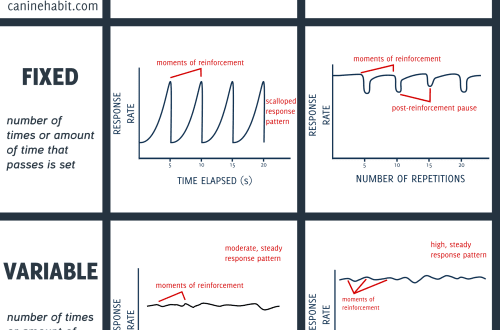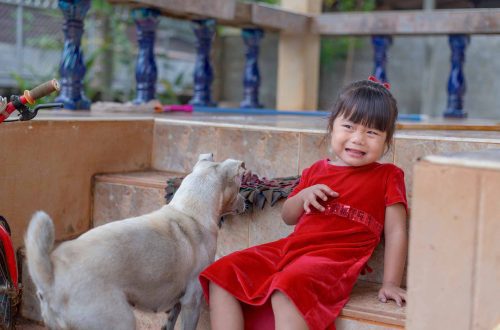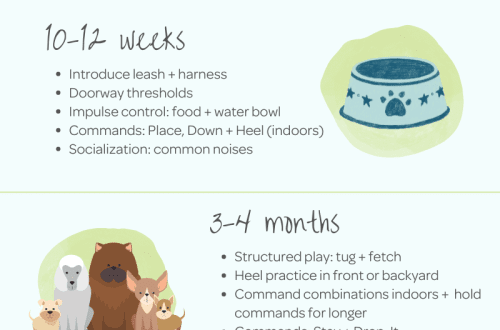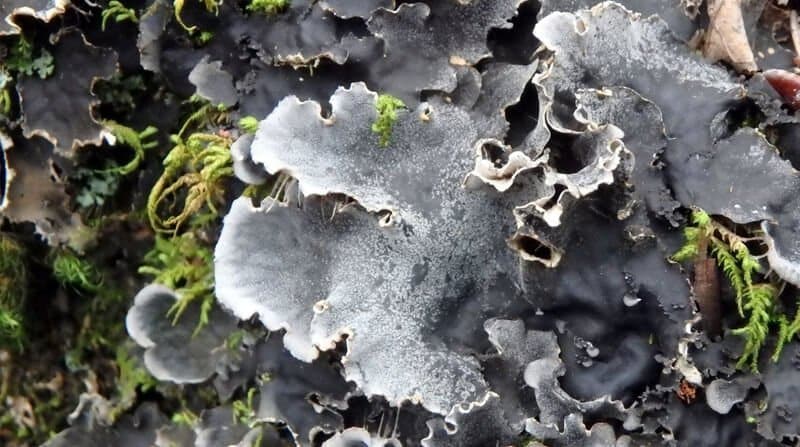
Lichen in dogs – photos, signs, symptoms and treatment
Contents
- How can a dog get shingles?
- Symptoms at the onset of the disease
- Photos of lichen in dogs
- Types of lichen in dogs
- Diagnostics
- Treatment for lichen in dogs
- What can be done to speed up recovery
- How to prevent licking ointment and scratching in a dog
- Can iodine be used to treat lichen
- Nutrition for dogs in the treatment of lichen
- How to apply ointment correctly
- Can humans or pets get infected?
- Is there a vaccine for lichen in dogs?
- Prevention of lichen in dogs
How can a dog get shingles?
Lichen in dogs has a fungal and viral nature. A four-legged friend can “catch” the disease in several ways:
- through direct contact with a sick animal;
- through household items (bowl, leash, collar, comb, etc.) belonging to an infected dog;
- through soil, grass and so on.
The likelihood of developing lichen is significantly increased if the animal’s immunity is reduced. This condition may be due to the dog’s pregnancy or lactation, a recent infectious disease, poor diet. Protective forces are also reduced if the pet has been taking corticosteroid drugs for a long time, as well as if it has a malignant tumor.
Homeless animals, and those that live in poor conditions, constitute a special risk group. Dampness, lack of hygiene, high density (for example, in shelters) and other factors provoke the rapid spread of the fungus.
On a note: dogs with long and thick hair require special attention from the owners. Due to the peculiarities of the hairline, their skin is poorly ventilated, which makes such pets the most vulnerable to infection.
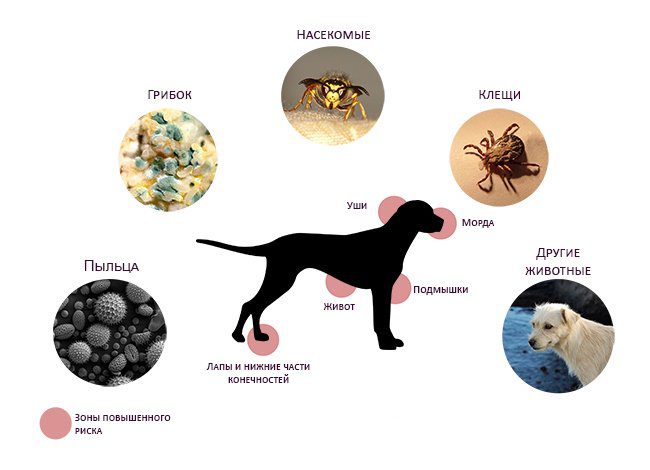
Symptoms at the onset of the disease
What symptoms of lichen in dogs should I pay attention to first of all? The latent period of the disease, on average, lasts about 10-14 days, depending on the type of lichen. Only then do signs of the disease become noticeable.
At the initial stage of depriving the owner will notice the following manifestations:
- the animal scratches the same place;
- in the area of itching, a superficial skin lesion is noticeable in the form of discoloration, broken hairs, cracks, peeling, and others;
- gradually the spot increases, new foci appear;
- the dog becomes lethargic.
In most cases, skin lesions occur on the paws of the pet, in the lower abdomen, on the muzzle.
You need to take action quickly, as the disease is spreading at a high speed. In addition, reduced immunity and damaged skin surface favor the addition of a bacterial infection and the development of other diseases.
Photos of lichen in dogs
Types of lichen in dogs
Dogs are diagnosed with several types of lichen, each of which has its own nature, symptoms and approaches to treatment. That is why veterinarians insist that if suspicious spots on the skin of a pet are found, the owners should immediately contact the clinic. At the same time, each owner should know what this or that type of disease looks like. This will allow you to quickly take preventive measures for households (some fungi can be transmitted to humans) and for the animal (stop further spread).
Pink lichen
Pityriasis rosea is an allergic reaction to an infection, presumably of a viral nature. Most experts associate the development of this type of disease in a domestic dog with a genetic predisposition. Skin lesions, as a rule, occur against the background of viral diseases of the digestive tract, organs of the respiratory system, after vaccinations.
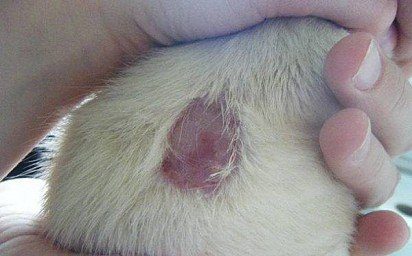
Pink lichen in dogs
Pink lichen is characterized by a chronic course, so it will not be possible to completely cure the animal. The disease occurs every time the activity of the immune system decreases in a pet: with stress, an inadequate diet, frequent illnesses. At the same time, the dog is not a source of danger to other animals and humans. However, if they have the same predisposition and low immunity, the likelihood of infection – even if scanty – exists.
How to recognize pink lichen in a domestic dog? This type is characterized by the following clinical picture:
- spots do not exceed 2 cm;
- the lesions have a pink tint with a yellowish middle;
- the bulk of the rash is localized in the groin, on the muzzle;
- the destruction of the foci gradually occurs with the formation of yellow areas with peeling of the epidermis.
Attention: pink lichen can be complicated by the penetration of fungi, bacteria, viruses into the skin, so treatment should not be delayed.
weeping lichen
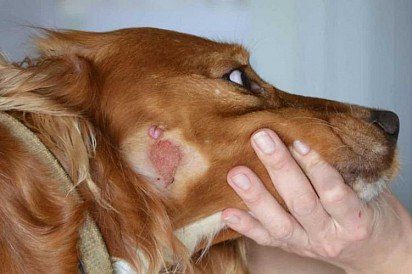
Weeping lichen on the muzzle of a dog
Weeping lichen is the dog’s immune response to an allergen; eczema, which is not based on an infectious nature. An allergen can be any substance (drug, food, and so on), hormonal disorders. The disease is chronic and is manifested by the following clinical picture:
- on the surface of the skin there are swelling, hot to the touch, itchy and painful;
- bubbles gradually form in their place;
- baldness occurs in the lesion;
- discharge from the vesicles gradually become purulent;
- the most common localization is the cheeks, coccyx, neck.
As the skin heals, it becomes covered with a crust, from under which healthy tissue is visible.
Since weeping lichen brings the dog considerable anguish in the form of itching, it begins to scratch the skin strongly. This can provoke an increase in the area of uXNUMXbuXNUMXbthe affected areas and the attachment of infection.
Ringworm
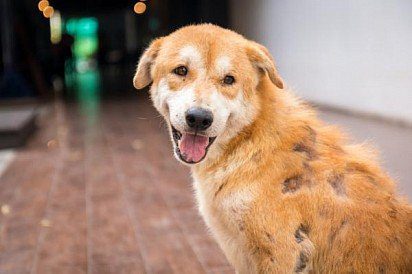
Ringworm in a dog
Unlike previous species, ringworm (shorn) is a disease of a fungal nature. Its development is due to the penetration of fungi of the genus Microsporum or Trichophyton into the skin, causing, respectively, microsporosis or trichophytosis. Ringworm is a dangerous and contagious disease that can be identified by the following signs:
- small foci of skin lesions (about 20 mm);
- the color of the spots is from pinkish to brown;
- their outline is clearly visible;
- localization – the base of the tail, limbs;
- severe itching;
- baldness of the affected areas.
The infection is characterized by a rapid spread rate. If you do not take action, then in a short time the fungus can lead to the death of the dog.
Peregrine lichen
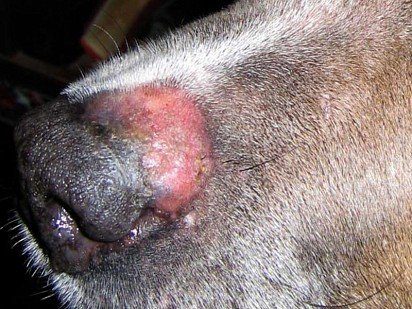
Pityriasis versicolor in a dog
This type of disease is caused by a yeast fungus of the genus Malassezia, which normally lives on the surface of the skin of not only dogs, but also other animals and people. In the absence of damage to the epidermis, strong immunity, the microorganism does not show aggression. Otherwise, the fungus multiplies intensively, releasing a large amount of caustic acid, which literally “corrodes” the epidermis.
Another name for lichen is multi-colored. This is due to different shades of lesions: pinkish, brown, brownish. Another sign is baldness of the affected areas. Since the spots quickly enlarge and merge, the disease can spread throughout the dog’s body in a short time.
Diagnostics
Before treating a dog for lichen, it is necessary to diagnose the identified pathology and differentiate it from other skin diseases. Fungal lichen in dogs can be confused with diseases such as dermatosis, pyoderma, seborrheic eczema, weeping and pink lichen.
The following methods are used for diagnosis:
- translucence with a Wood’s lamp;
- wool analysis (sowing);
- skin biopsy.
Microscopic examination reveals the presence / absence of spores and mycelium, sowing makes it possible to determine the genus of the fungus. In addition, laboratory tests of the pet’s urine and blood are mandatory. Additionally, the doctor may prescribe allergy tests and tests.
Treatment for lichen in dogs
When diagnosing lichen in dogs, complex treatment is indicated. It is aimed at solving several problems:
- destruction of pathogenic microorganisms – the causes of the disease;
- prevention of the spread of foci and the addition of a secondary infection;
- elimination of itching, pain;
- normalization of the pet’s immune system.
For this purpose, external and internal medicines are used in the form of ointments, creams, gels, solutions, tablets. If the disease is detected at the initial stage, external preparations are more often used. With a systemic lesion of the body, tablets and / or injections are indicated.
External preparations for lichen in dogs
In the veterinary pharmacy, local preparations intended for the treatment of lichen in dogs are presented in a large assortment. Which remedy is best to use in a particular case – the doctor will say after diagnosing the animal. Self-treatment of lichen is not recommended, as it threatens to aggravate the disease and develop complications.
Lekaderm
Ointment
Antipruritic, antibacterial, anti-inflammatory
Used for minor skin lesions
Sanoderm
Ointment
Antifungal, anti-inflammatory, antibacterial, antihistamine
Toxic, use caution in animal liver disease. Only on doctor’s orders
Miconazole
Ointment
Antifungal, antibacterial
Rarely gives side effects
Fungin
Spray
Antifungal, healing accelerating, regenerative
Restores the epidermis, eliminates irritation. Non-toxic
Clotrimazole
Ointment
Antifungal
Not suitable for pink and weeping lichen
Imaverol
Solution
Antifungal
Only 4 procedures are carried out. Can be used to treat the dog’s place.
YAM BK
Ointment
Antifungal
The composition contains tar, turpentine, lanolin, zinc oxide and other components. Promotes hair growth.
Zinc ointment
Ointment
Antiseptic
Protects the epidermis, accelerates tissue healing
Ichthyol ointment
Ointment
Antifungal, antibacterial, anti-inflammatory
Restores skin integrity
Sulfur-tar
Ointment
Antifungal, antiseptic, antiparasitic
Accelerates the recovery of the epidermis
Important: all medical procedures are carried out with gloves!
Medicines for internal use
Depending on the condition of the dog, the veterinarian may prescribe additional symptomatic, supportive and antifungal therapy in the form of oral preparations:
- if a significant part of the animal’s body is affected by the fungus – antifungal agents (Fluconazole, Nizoral);
- in case of secondary infection – antibacterial drugs (Amphotericin, Nystatin);
- to maintain the liver – hepatoprotective agents (Hepatovet);
- for relief of allergy symptoms – antihistamines (Suprastin, Diazolin);
- in order to normalize the immune system – immunostimulants and immunomodulators (Glycopin, Immunofan);
- for the prevention of disorders of the digestive tract – probiotics (Olin, Laktobifadol);
- vitamins (Aminovit).
Treatment with folk remedies
Treatment at home may be accompanied by the use of folk remedies. It should be remembered that folk recipes alone cannot cure a fungus in an animal. Such types of lichen, such as ringworm or weeping, can only spread over a large area and aggravate the condition of the dog, so folk remedies can be used as additional symptomatic ones.
Most often, home treatment methods for lichen in animals are represented by external treatment of the affected areas with some kind of composition. These can be: apple cider vinegar, tar, garlic passed through a garlic press (it can be mixed with honey, camphor oil, wine vinegar, tea tree oil). Even engine oil is applied to infectious foci. As a rule, stain treatment is carried out several times a day.
Attention: before using any folk recipe, be sure to consult your doctor!
What can be done to speed up recovery
How to cure a dog from depriving, preventing the development of complications? The main condition is strict adherence to the recommendations of the veterinarian. It is necessary to give the animal drugs in strict accordance with the prescribed course and dosage, without missing doses. Unauthorized replacement of one drug with another, as well as premature termination of therapy, is not allowed. The owner of the dog must be prepared for the fact that in some cases the treatment may take a month or more.
To speed up the recovery of a four-legged friend, to prevent the spread of infection, treatment with special shampoos, which include antifungal components, will help. Such hair care products are gentle on the surface of the skin, but it is not recommended to use them for a long time. To avoid excessive dryness of the epidermis, follow the instructions.
How to prevent licking ointment and scratching in a dog
The foci of lichen cause severe itching in the pet. When he scratches the affected area, the infection spreads to neighboring healthy tissues, which significantly delays recovery. The same happens if the animal licks off the applied ointment.
If the foci are single, you can stick them with a plaster or bandage, after applying a gauze swab with ointment to the affected area. It is possible to prevent combing of large areas with the help of a special collar. In the case when the dog resists such a device and removes it, a jumpsuit should be put on it.
Can iodine be used to treat lichen
The use of iodine to treat lichen in dogs depends on the pathogen identified. So, with a ringworm variety of the disease, this drug has the most effective effect. It is not recommended to use an iodine solution for pink lichen. In other cases, the remedy does not lead to any pronounced result. It should be noted that some veterinarians are categorically against the use of iodine for lichen. Judging by the reviews, you should not try to cure an unusual “stain” on your own, using iodine as a panacea – this can lead to disastrous consequences for the dog.
Nutrition for dogs in the treatment of lichen
Treatment of lichen in dogs must necessarily be accompanied by a change in diet. This is especially true for pink and weeping types of the disease, which are allergic in nature. A special diet is designed to minimize the toxicity and allergenicity of certain foods and substances. The following are subject to exclusion from the diet:
- potatoes;
- chocolate;
- sweets;
- smoked products;
- spice;
- any products containing dyes, flavors, preservatives and other additives.
With weeping lichen, it will take some time to remove meat and meat products from the pet’s menu.
How to apply ointment correctly
The better prepared the affected area of the dog’s skin with lichen, the greater the effect can be achieved from the therapeutic ointment, so each owner should know the algorithm of actions when treating the infectious focus.
- The following items are prepared in advance: medical rubber gloves, blunt-ended scissors, a metal container and matches, a soap solution, an antiseptic (furatsilin, chlorhexidine, hydrogen peroxide), tweezers, gauze wipes, therapeutic ointment.
- Before proceeding directly to the procedure, put on gloves.
- The affected area of the skin is treated with an antiseptic solution.
- If there is hair on the periphery of the focus, the hair is carefully cut at a distance of about 5 mm from the affected epidermis. The cut hair is immediately burned.
- In the presence of scabs, they are impregnated with a solution of soap until completely softened.
- Scabs are removed with tweezers, and the area is again treated with an antiseptic.
- Use a paper towel to remove any remaining moisture.
- Apply ointment.
At the end of the treatment of all affected areas, the sheared wool and napkins should be burned.
Can humans or pets get infected?
Every dog owner should know what type of lichen is transmitted to humans and other animals. With regard to ringworm, the answer is unequivocal – this disease has a high degree of contagiousness and is very contagious. When diagnosing it, the animal must be isolated from other pets and household members (especially children).
Weeping lichen does not pose a danger to others, as it is an eczema of allergic origin. The usual hygiene measures when caring for a sick pet are enough.
The possibility of transmission of infection in rosacea is currently questionable. Opinions of experts of different specializations contradict each other: some believe that this disease is contagious, others say the opposite. In general, it is generally accepted that if a person has strong immunity, then pink lichen is not dangerous for him. If the immune system fails (due to age, illness and other reasons), then it is best to stay away from the animal.
Pityriasis versicolor also does not pose a danger to humans and animals, since the fungus is also present on the surface of their bodies. There is a theoretical possibility of the development of the disease in households under the condition of severely reduced immunity, so if the apartment contains a dog with pityriasis versicolor, it is better to play it safe and isolate it from children, the elderly or weakened people.
Is there a vaccine for lichen in dogs?
You can prevent the development of lichen in a dog by putting a special vaccine. Good reviews have drugs Vakderm and Mentavak. These are intramuscular injections, which contain inactive fungi that cause lichen. Vaccines can be given after an examination of a four-legged friend, deworming, examination by a veterinarian. Vaccines can also be used if the animal is already ill with lichen. Self-administration of injections is not recommended, since the dosage and course require an individual approach.
Prevention of lichen in dogs
To prevent the development of lichen in dogs, you can follow a number of preventive measures:
- protect the pet from contact with unfamiliar and homeless animals;
- observe sanitary and hygienic standards, wash the dog in a timely manner with suitable means (including preventive ones);
- properly feed the pet, avoiding the presence of possible allergens in the food;
- make sure that the animal’s diet is complete;
- timely vaccinate;
- do not limit the pet in walks;
- avoid using foreign bowls, collars and other household items;
- treat the identified diseases in time, avoiding a strong decrease in immunity.
Every year, microbes mutate and become more and more resistant to the drugs used, so a single and 100% effective treatment for lichen in dogs has not been developed. In addition, each animal reacts in its own way to the drug and the pathogen, which also affects the speed and effectiveness of therapy.
However, ringworm in dogs can be cured. To do this, you need to quickly respond to the symptoms, bring the pet to the clinic, follow the recommendations of a specialist and follow preventive measures in the future.



